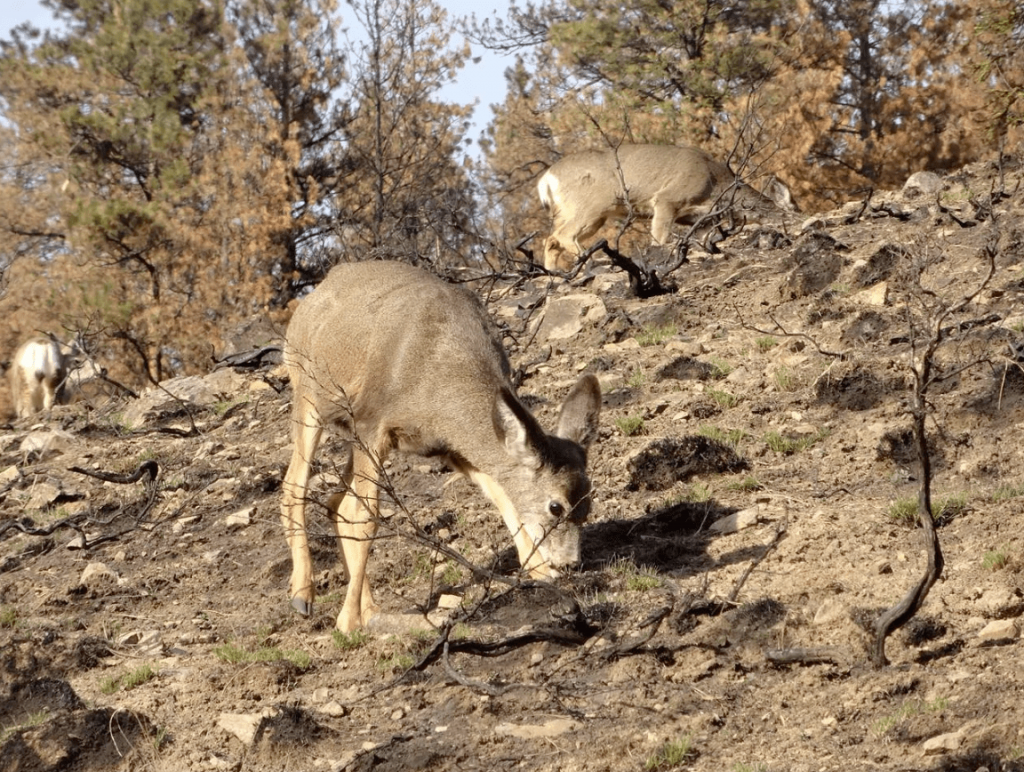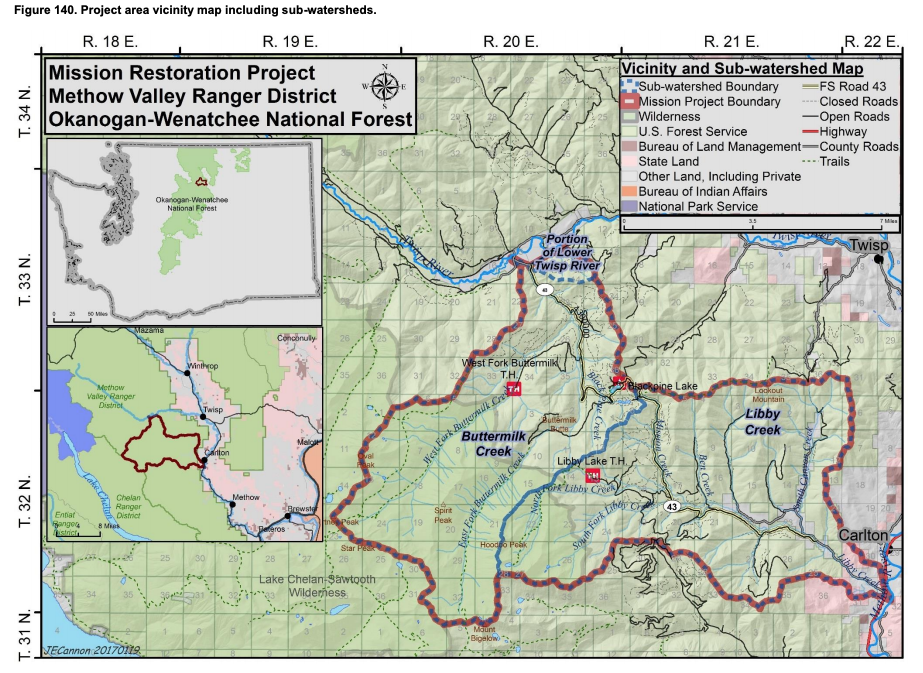
Largescale Methow Habitat Project Can Proceed After Judge Tosses Lawsuit
If you’re fed up with overly litigious groups constantly throwing hand grenades and monkey wrenches into Northwest fish, wildlife and habitat management, you might like the news out of a Spokane courtroom this week.
A federal judge there tossed out a lawsuit from Montana’s Alliance for the Wild Rockies which had challenged a 50,000-acre Okanogan-Wenatchee National Forest thinning and controlled burning, culvert replacement and riparian treatment project in Northcentral Washington’s Methow Valley.

Now, I’m not saying that all lawsuits are bad, far from it. Government, business and individuals needs to be held accountable when it comes to their impact on critters and habitat.
The kind I’m specifically talking about are those from purists/zealots who, frankly, sometimes appear to be suing just to meet some sort of annual quota.

I think we all know which particular outfit has my tail feathers in a bunch this week.
The Alliance claimed that logging, thinning and burning in the Buttermilk Creek drainage on the lower Twisp River and Libby Creek watershed, which drains into the Methow River below Carlton, would “be a setback for grizzly bear recovery in the North Cascades.”
That’s according to the boildown in a Capital Press article out earlier this week.
But national forest managers were green-lighted on Tuesday by District Court Judge Salvador Mendoza Jr. to proceed “because the [USFS] conclusion that it wouldn’t have a negative impact on protected grizzly bears was reasonable,” reported Bloomberg Law.
There are no known grizzlies in the area and – for the moment – the federal government is not pursuing reintroducing them in the North Cascades either.
The Methow Valley News published a solid article with arguments from both sides back in September.
The goal of the restoration project?
Make the forest healthier and reduce the risk of another Carlton Complex conflagration — you know, the 2014 wildfire that blew up and burned 256,000 acres from Winthrop down to Pateros. At the time it was the biggest that had ever burned in the state.
Also helps out the local economy with some logging and other work.
Side benefit?
“Mission Restoration Project near Twisp = more mule deer.”
That’s the September subject-line of an email from Chase Gunnell of Conservation Northwest, whose organization has supported the project.
“A bunch more thinned and/or prescribed burned stands here would provide a direct, highly-visible boost for hunters and deer on the westide of the Methow Valley in a short amount of time,” he said.
The valley hosts one of the state’s largest and most important mule deer herds.

Now, I’ll admit, the project does involve decommissioning around three dozen miles of logging roads in the project area, a mix of kelly humping, ripping up and reseeding some two-tracks, as I understand it.
I have mixed feelings about because that will impact some hunters, but it will also make for less disturbed habitat for deer and other critters for hunters to hunt.
I’m more than happy to admit that I’ve benefited from decommissioning in my western Okanogan County deer hunting.
Then there are the benefits that stream and culvert work will have on ESA-listed stocks.
Per the North Central Washington Forest Health Collaborative, a 24-member coalition that supports the project, “Protecting the watershed and aquatic ecosystem health and improving the currently impaired hydrologic and geomorphic processes in the Libby and Buttermilk sub-watersheds can support and complement efforts to recover these threatened fish,” Upper Columbia spring Chinook and summer steelhead, and bull trout.
The Alliance for the Wild Rockies has said it is considering whether to appeal. Somebody should appeal to them to lay off the lawsuits for the greater good of fish, wildlife and humans.
“We’re pleased to see the court affirm the restoration value and scientific integrity of the Mission Project,” said CNW’s Okanogan Forest lead Michael Liu in Twisp. “This ruling is an example of where collaboration, community engagement and sound environmental analysis prevailed to advance a project that’s a win-win for the forest, wildlife and local economy.”
“The Mission Project doesn’t include all the restoration pieces we would have liked to see, but that’s the nature of forest collaboration,” added Liu, who retired in 2018 from the USFS after 36 years, including nine as the Methow Valley District Ranger. “Allowing this project to move forward provides a valuable model for landscape-scale forest and watershed restoration in response to climate change and the effects of poor forest management during decades past; we hope to see it replicated around the region.”
The project is a potential model for more throughout the Cascades. It seems like a win-win-win-win to me.
